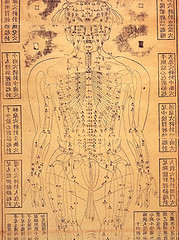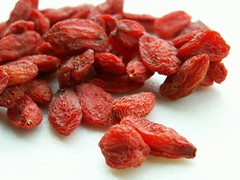 Photo by Paul: Anya says hello to Seth
Photo by Paul: Anya says hello to Seth
Traditional Chinese Medicine is a wonderful tool to use during pregnancy. It's drug-free, and relaxing for both the baby and the mother. It can be used throughout the entire pregnancy, and even after delivery. Although there are a few acupuncture points that are contraindicated in pregnancy, there are many safe and very effective points that practitioners can use to help the mother feel her best during this special time.
During the first trimester (1-12 weeks) of pregnancy, a woman might feel fatigue and nausea, both of which may slowly disappear by the second trimester (13-28 weeks). There may be some herbal formulas to take, but these may be limited due to the fact that many herbs can't be used during pregnancy, and the taste may be difficult for a pregnant woman to swallow. Weekly acupuncture treatments are the best remedy during this time of the pregnancy to combat the nausea and help her gain some energy.
The second trimester is the time where the woman may start to feel slightly better in regards to the nausea, and also when she will begin to look pregnant and feel the baby move. That being said, heartburn, constipation, and even hemorrhoids may occur during this time. This is due to hormonal changes that affect the smooth muscle in the body as well as the veins. Acupuncture points can also be used effectively at this time to provide relief for the mother.
In the third trimester, acupuncture can help relieve edema, or water retention, around the ankles and feet as well as back pain and insomnia. If the baby is in a breech position, moxibustion can be used to turn the baby around. It usually takes around ten days of using the moxibustion stick daily, but it can be very effective when using it properly. Acupuncture can also be used closer to the delivery date to help with effacement and to shorten the labor time. There are also some practitioners who will help induce labor in a baby that is past the due date, depending on the situation. There are some hospitals and midwives who also allow acupuncturists to be present during a delivery if requested by the mother.
Every pregnancy is different, and it's important to keep an open mind with the treatments. This site has some good suggestions about Western herbs to avoid during pregnancy, as well as some other helpful hints. Mother's Special Blend is an oil that several women swear by to help with stretch marks (you can also find this at New Seasons in Portland). Pregnancy is a special time in a woman's life, and I believe that acupuncture can effectively help her to have the best 40 weeks possible.



 Photo by Paul: Anya says hello to Seth
Photo by Paul: Anya says hello to Seth





